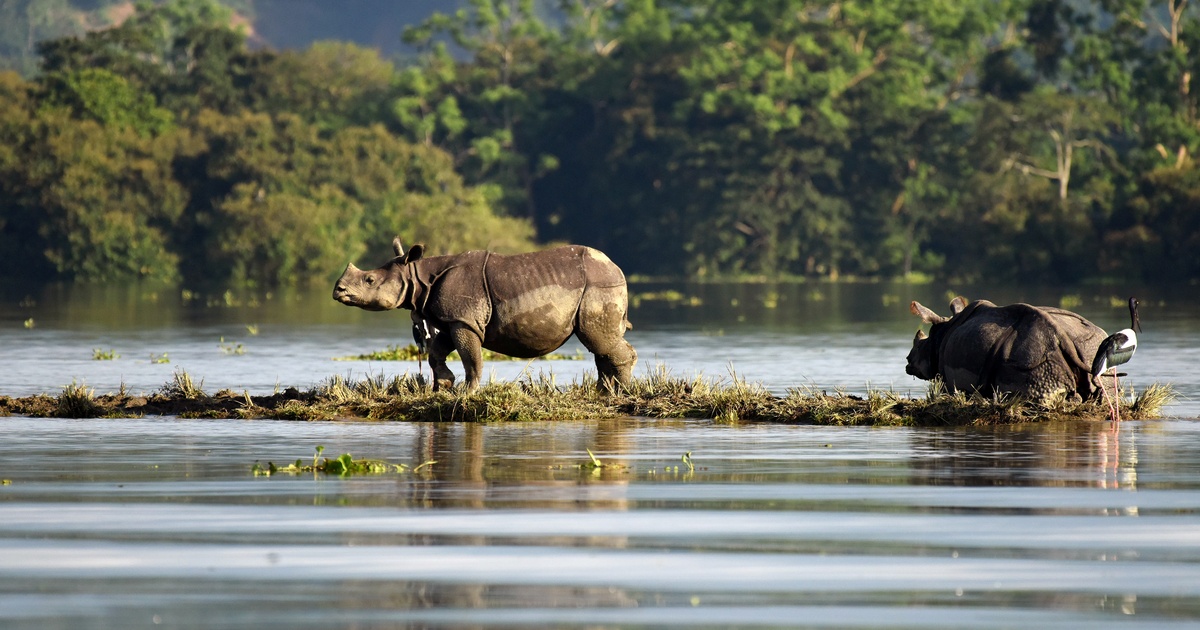Editor’s Note: As COP26 looms, we are sharing articles authored by Indian youth leaders who have been selected as part of the United Nations India’s We The Change campaign. They are all working towards various Sustainable Development Goals as prescribed by the UN.
Flooding of the Brahmaputra has shaped the land in most of Northeast India for thousands of years. In the recent past, the region has been grappling with the devastating impacts of the changing climatic conditions. Changing rainfall patterns are one of the primary causes of concern for residents of many of the villages in rural Assam. Major floods in the Brahmaputra are known to cause inundation for several days.
Today, the floods present challenges in many ways. Sometimes it worries dam officials and forces them to release water late at night, artificially flooding many villages. At other times, it is the changing course of the rivers and its tributaries that uproots entire villages.
[caption id=“attachment_7013131” align=“alignnone” width=“1280”] Floods in Assam. Representational image.[/caption]
The Kumutiya river, in Dhemaji, floods every year, destroying crops and houses. It has shifted nearly three kilometres since 1960 and villages have had to shift with it. It has a huge human cost and often has a very asymmetric impact on the lives of the villages, affecting the most vulnerable sections of society and pushing them back to poverty. There are times when families have to leave their houses in the middle of the night, never to come back again. Not only do they leave behind items of sentimental value, the sudden rise of water — from both natural and artificial floods — give them no option of collecting valuables or important documents.
Unlike in the past, floodwaters no longer recede fast enough to resume agricultural activities. It often stays back much longer, impacting farming and harming the livelihoods of those already affected by floods. The pre-monsoon and monsoon rainfall period that usually begins in April and lasts till the end of August now extends into September. Severe rainfall in Arunachal Pradesh, where illegal timber logging is rampant, brings in more silt from the mountains than ever before. The deposition of silt is reducing the water carrying capacity of the river and is causing frequent and unpredictable shifting in the course of the rivers.
Impact Shorts
More ShortsFlooding in India is not an issue of the Northeast alone. It affects every corner of the country. After 43 years since the first and the last commission on floods was constituted, India is yet to have a national-level flood control authority.
One of the key observations of the 1976 Rashtriya Barh Ayog (RBA), or the National Flood Commission was that the increase in floods was due to anthropogenic factors such as deforestation, drainage congestion and badly planned development works. In the 1980s, it was appropriate for the commission to rule out natural causes, which is no longer the case.
Today, large-scale (anthropogenically induced) glacial melting in the Himalayas exacerbates flooding. The commission in its report questioned the effectiveness of embankments and reservoirs. As receding floodwater gets blocked by embankments, the efficacy of its use is once again in question.
How do we deal with flooding?
With varying geographical features, a country as large as India cannot have fit-for-all master plans that can be effective in flood control. Every state and the Center must coordinate closely and put consolidated efforts to take up research and policy initiatives to control floods and use common water resources smartly. Going deep into the problem, one could begin to understand the origins of the problem in estimating flood-prone areas of the country, which is why research initiatives are required to facilitate the creation of a dynamic strategy suitable to cope with the changing nature of floods. Each state in such an effort can build its appropriate plan to suit the unique needs.
[caption id=“attachment_6992681” align=“alignnone” width=“1200”] Morigaon: A boy sits in a container to move across a flooded village in Morigaon district of Assam in July 2019. Image credit: PTI Photo[/caption]
One of the alarming highlights of the 2017 CAG report was the lack of working telemetry stations for flood forecasts in India. The majority of flood forecast systems deployed are either washed away or have had their parts stolen. As a result, despite decades of modernisation efforts, the Central Water Commission (CWC) does not have ‘real-time data’ on floods and depends on manual data for its policymaking. Many frontier technologies in our reach should be used to design economical technologies that can be deployed, repaired, and upgraded with quick turnarounds. Alongside that, renewed efforts are also required in creating open-source GIS-based flood models.
Today, it is undeniable that humans are causing the glaciers to melt faster than ever, hence the key to the solution is in understanding what we can.
About 15 percent of India own vehicles and the entire country is dependent on power that is 70 percent generated from coal. Vehicles and coal-based power plants are the largest emitters of greenhouse gases that heat the planet. Electricity generation, transportation activities and Indian kitchens are responsible for two-thirds of man-made carbon emissions in India. Also, 20 percent of this total man-made emission comes from road transport alone. Each of us can contribute to reducing the footprint from transportation and our kitchen and we discuss that below.
If each of us chooses to walk, cycle or carpool, whenever convenient, we could reduce emissions by at least one percent. The heavy SUVs and sporty cars are highest on emissions, and if we pick a compact car for travel, we can contribute to reducing our footprint. The roof-top box or a tow increases the drag on the vehicle and requires more power, meaning decreased fuel economy and more emissions. India should create policies to limit such carriages.
[caption id=“attachment_3899883” align=“alignnone” width=“1280”] Representational image, Credit: Reuters[/caption]
Unnecessary acceleration and braking reduce mileage by over 30 percent and increase your carbon footprint. Speeding often puts pressure on the engine for more output and it starts burning more fuel leading to more emissions. If we avoid speeding, and use the ‘eco’ mode, with properly inflated tires and the correct grade of fuel, our footprint per ride can be significantly reduced.
Another noteworthy point is to keep a tab on the oxygen sensors of the engine and other industrial equipment. The correctly calibrated oxygen sensors increase fuel efficiency by 40 percent and massively reduce emissions.
Climate change is an exponential phenomenon and in our fight against it, the key is to aggressively use technologies, and use prescriptive analytics to counteract the industrial impacts of planet-damaging behaviours.
Join the We The Change movement by logging on and sharing your climate action story using #WeTheChangeNOW
The author is a Sustainability and Climate Risk practitioner within the financial risk management domain. He is also the founder of the investech company CredFIC and has founded the Global Shapers Guwahati Hub.


)

)
)
)
)
)
)
)
)



